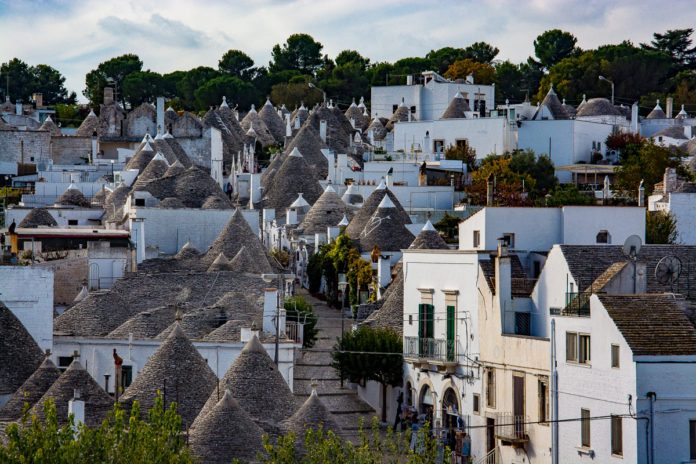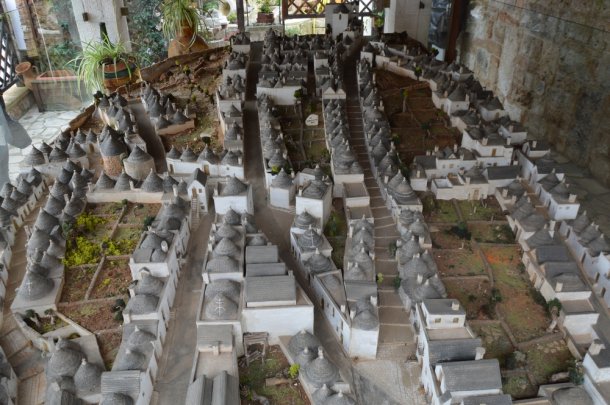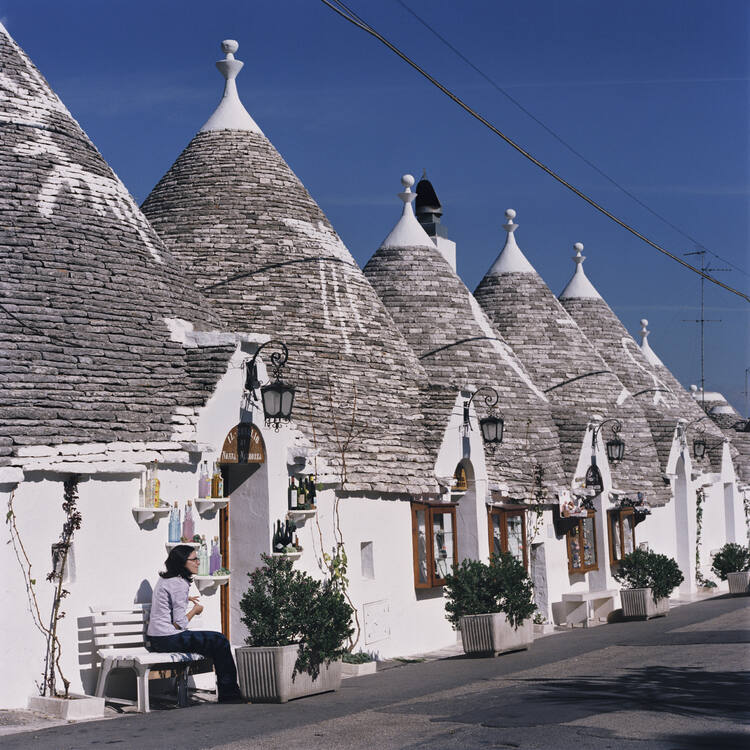



Alberobello (Aiarubbédde in Apulo-Bari) is an Italian town of 10 718 inhabitants in the metropolitan city of Bari (province of Bari), in Puglia.
Famous for its characteristic houses called trulli (Casedda or Cummersa) which is part of the Valle d'Itria and the Murgia dei Trulli.
If the trulli intrigue you, during your holiday in Puglia you can go to the town of Alberobello, also known as the "Capital of the Trullo": in 1996, the trulli of Alberobello became a UNESCO World Heritage Site. Strolling through the streets of Alberobello, stop at the Trullo Sovrano, the largest in the country, and visit the museum used inside, divided over two floors.
During the summer, you can attend various kinds of events (concerts, cultural and poetry evenings, theatrical performances) that are organized inside. Among the artisan shops you can buy linen garments produced by the artisans of Alberobello, known for their mastery in the textile art, and you can enjoy almond-based desserts, pettole and cartellate.

The renovation of the ancient trulli, as well as that of the old Masserie, has combined tradition with hospitality and given rise to new living experiences. Sleeping in a trullo, as well as sleeping in a Masseria, is now possible thanks to the work of recovering the old structures, brought back to life while keeping their original charm intact.

According to some studies, the trulli of Alberobello date back to the mid-fourteenth century; in fact, at the time it was common to tear down and rebuild damaged buildings, rather than repair them.
The dry construction, without mortar, seems to have been imposed on peasants in the 15th century by the Counts of Conversano, to escape an edict of the Kingdom of Naples which imposed taxes on each new urban settlement. These buildings were therefore precarious constructions, easy to demolish and not taxable.
In truth, the trulli are anything but precarious: the internal structure, although devoid of supporting and connecting elements, in fact has an extraordinary static capacity.
The plan of the trullo is approximately circular; the heavy lime masonry is grafted onto the natural rock base.
Generally the trulli are modular units: the interiors are distributed around the central compartment. The thickness of the walls and the scarce presence of windows ensure an optimal thermal balance: warmth in winter and cool in summer.
The roof is composed of a pseudo-dome of horizontal limestone slabs positioned in increasingly smaller concentric series - the so-called "chianche" (inside) and the thinner "chiancarelle" (outside).

The keystone is very important, often decorated with esoteric, spiritual or propitiatory motifs. Ingenious is the presence of a ledge protruding from the roof used for the collection of rainwater in special cisterns.
The trulli are a unique example of an ancient construction that survives and is still used today. Visiting the beautiful Alberobello is like taking a trip to a timeless country.
Alberobello
Address: Piazza del Popolo, 33, 70011
Phone: 080 432 1200
Site:
https://www.comunealberobello.gov.it/index.php?lang=itLocation inserted by
Anna Martucci